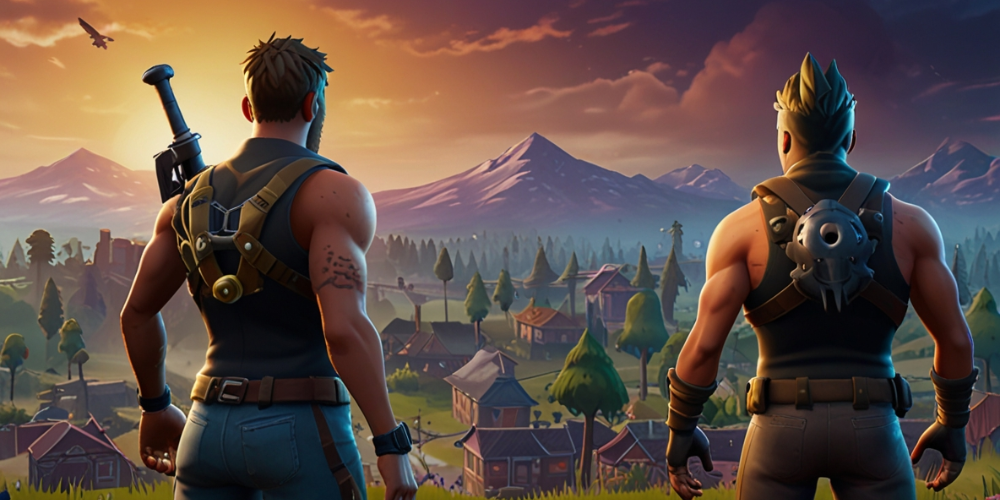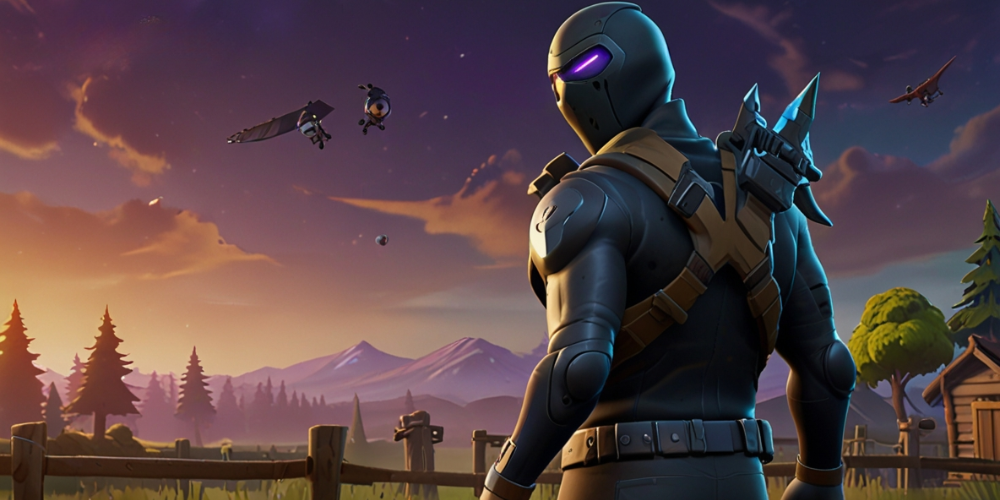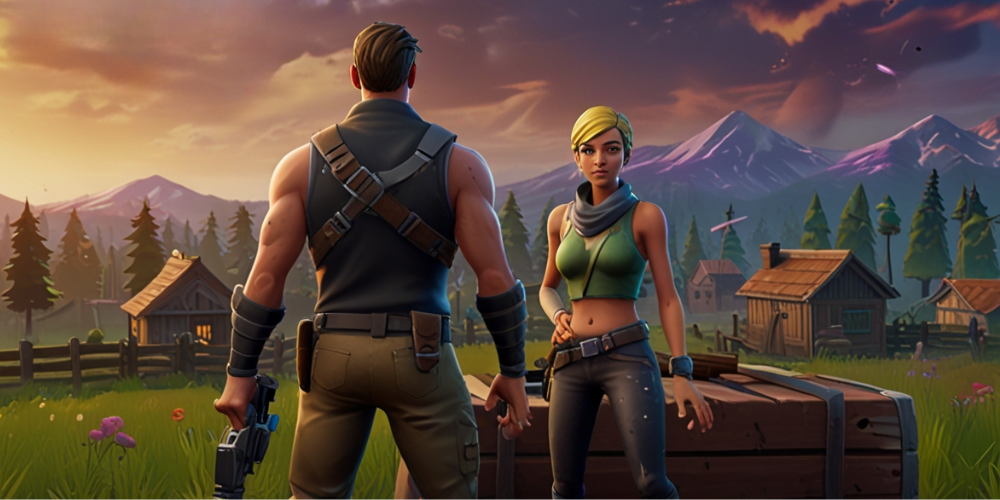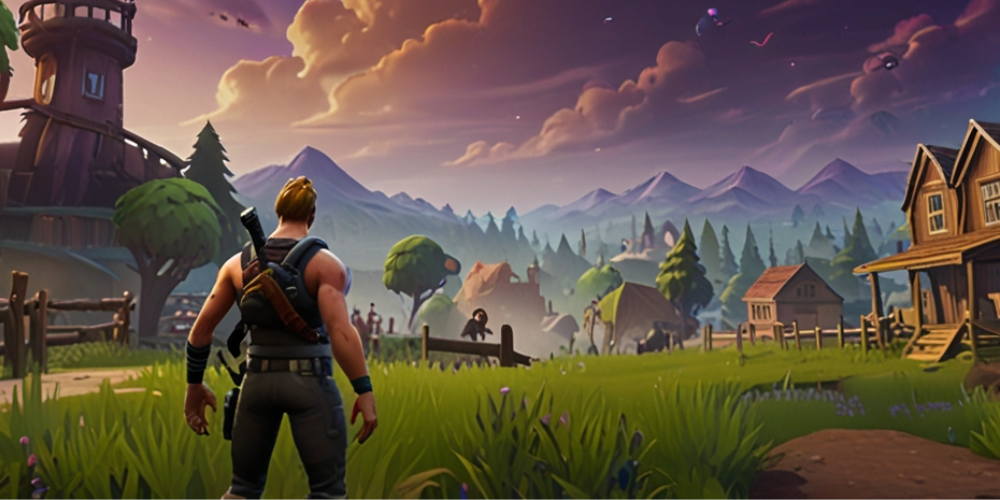Fortnite - Battle Royale Mechanics and Cultural Impact
- Jul 29, 2024
- 902

As I first dived into Fortnite, I was struck by the vibrant colors and unique art style that instantly differentiated it from other games in the battle royale genre. The ability to build structures while simultaneously engaging in combat added a layer of complexity I hadn't encountered before. While other battle royale games emphasize a more straightforward approach to survival, Fortnite's mechanics encouraged creativity and strategic planning. It was an exhilarating combination that kept me hooked from the very beginning.
The Significance of Building Mechanics
One of the standout features that captivated my attention was the building mechanic. It felt like an extension of my gaming experience, allowing me not just to survive but to thrive. The prospect of erecting walls, ramps, and complete forts during a firefight transformed every encounter into a dynamic chess match. It was essential to think on my feet, using resources wisely while also maintaining awareness of my surroundings. Every material had its purpose, and learning when to build versus when to engage became a constant mental workout.
The Unique Structure of the Map
Fortnite's ever-changing map was another highlight for me. Each season brought significant changes, from new locations and challenges to thematic events that reshaped how players interacted with the environment. The anticipation of exploring a newly designed area or unraveling mysteries hidden in the landscape generated excitement that kept me coming back for more. It was impressive how Epic Games consistently revitalized the battlefield, ensuring that no two matches felt the same.

Weapons and Inventory Management
The array of weapons available in Fortnite is a crucial aspect of its gameplay. Each season introduces new tools and gear, requiring me to adapt my tactics continually. I found it fascinating to discover how weapon rarity affected gameplay; higher rarity often meant better stats but also brought higher competition. It's a delicate dance of finding the right loadout while being mindful of my opponents and their own strategies. I came to appreciate inventory management—deciding when to swap a weapon for something better or when to carry healing items—and it added a layer of strategy to the experience.
Dynamic Gameplay Elements
I was particularly enthralled by Fortnite's dynamic gameplay elements. The games often featured environmental changes like storms that forced players into tighter confrontations. Remembering the encroaching danger kept my adrenaline pumping, ensuring I couldn't linger too long in one spot. It contributed to that sense of urgency that made matches feel alive and unpredictable. Each decision became crucial as the storm closed in, prompting quick thinking and adaptability.
The Role of Emotes and Communication
Fortnite's use of emotes is a cultural phenomenon that caught my eye. These expressive animations became a form of communication beyond the game's mechanics. I found that using emotes allowed for a level of playfulness, even in the heat of battle. Additionally, they fostered a sense of community and camaraderie among players, where shared emotes could reflect personalities or in-game memes. Whether celebrating a victory dance or taunting an opponent, emotes played a significant role in player interactions.

Collaborative Play and Team Dynamics
I enjoyed the possibilities of collaborative play within Fortnite. Engaging with friends or collaborating with unfamiliar players enhanced the complexities of the game mechanics. Communication became key as I learned to strategize and coordinate actions during intense firefights. It brought out the leadership qualities in me, as well as an understanding of teamwork and how different playstyles meshed together effectively. Fortnite encouraged social interaction, transforming solitary gaming sessions into shared experiences.
Season Events and Their Appeal
Fortnite's seasonal events were another layer of allure for me. Epic Games’ ability to create limited-time game modes and thematic experiences kept the player base engaged and eager for new content. I found myself looking forward to events like the Halloween-themed Fortnite Mares or the winter festivities during the holiday season. It wasn't just about the gameplay; it was about being part of a larger narrative that unfolded every few months. These events offered a refreshing break from the norm and kept the community buzzing.
The Cross-Platform Revolution
When I discovered that Fortnite supported cross-platform play, I realized how groundbreaking it was for the gaming industry. It allowed me to interact and compete with friends regardless of their device—be it PC, console, or mobile. This innovative approach broke down barriers and fostered inclusivity, making it a game that could be enjoyed across multiple platforms. It reshaped how I viewed competition and collaboration, emphasizing that skill was the true measure of success, not the system I chose to play on.

Esports and Competitive Play
The esports scene surrounding Fortnite fascinated me as it began to evolve. Watching tournaments where skilled players showcased extraordinary building and combat skills was awe-inspiring. It elevated gaming to an entirely new dimension, transforming what used to be a leisurely activity into a competitive sport. The strategies employed by competitive teams pushed the boundaries of what I thought possible in the game. Seeing players go head-to-head in high-stakes situations was exhilarating and showed the depth of Fortnite's mechanics.
The Cultural Impact Beyond Gaming
Fortnite's reach extended far beyond gaming for me. It permeated popular culture, influencing music, fashion, and even social media trends. Iconic skins and emotes became part of the cultural lexicon, as it bonded friends across the globe through shared experiences. The crossovers with artists and franchises, like the collaborations with Marvel and various music icons, created buzz that transcended traditional gaming circles and engaged a wider audience. I began to notice Fortnite references everywhere, solidifying its status as a cultural touchstone.
The Challenges of Monetization
As much as I loved Fortnite, I couldn’t ignore the discussions surrounding its monetization strategies. The concept of microtransactions and the prominence of exclusive skins and battle passes were a double-edged sword. While I appreciated the ongoing content updates, I also felt the pressure to invest money into cosmetic items to keep up with the trend. This led to a broader conversation about value in gaming, pushing the community to balance their enjoyment of the game with potential spending.
The Evolution of Game Design
Fortnite's innovative approach to game design broke new ground that extended beyond its immediate success. It sparked a wave of imitative titles attempting to capture a fraction of its audience. I began to see how other developers recognized the appeal of mixing building mechanics with battle royale. This shift reflected on the broader landscape of multiplayer gaming, where mechanics that had once felt niche became staples of design. As Fortnite matured, it created a legacy influencing how games are structured and played.
Community Engagement and Feedback
The relationship between Fortnite and its community played a significant role in its success. I admired how Epic Games was responsive to player feedback, continuously tweaking gameplay based on the community's response. Updates were frequent and often included requested features, showing the developers' commitment to an engaged player base. This two-way communication fostered loyalty among players, emphasizing that the game's evolution was a shared endeavor instead of a unilateral decision by developers.
The Joy of Victory and the Frustration of Defeat
Finally, I'll touch upon the most emotional aspect of Fortnite—the thrill of victory and the agony of defeat. Winning a match brought a rush of adrenaline unlike anything else, reinforcing the effort and strategy I'd poured into it. Conversely, getting eliminated early could be disheartening, yet it also sparked a daydream of what could have been. Each match was a lesson, pushing me to improve and try different tactics in future games. This emotional rollercoaster became a core element of my Fortnite journey, shaping how I approached not just the game but competitive spirit itself.